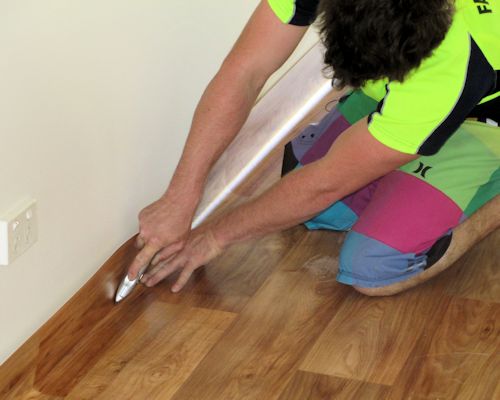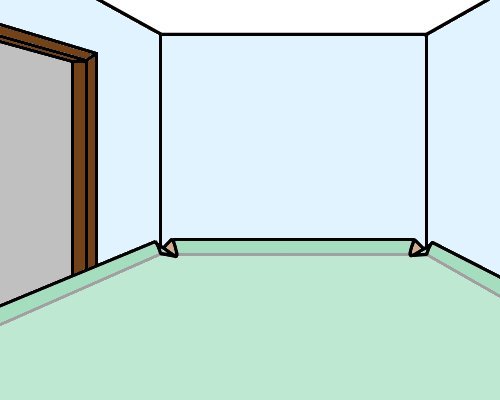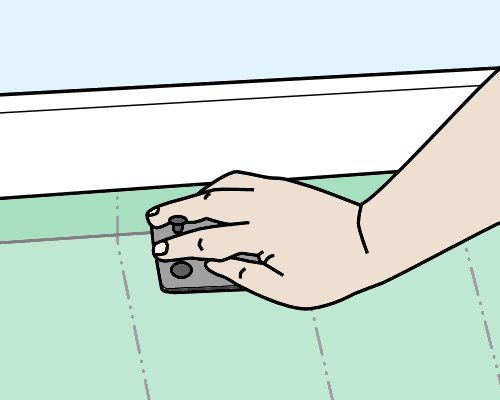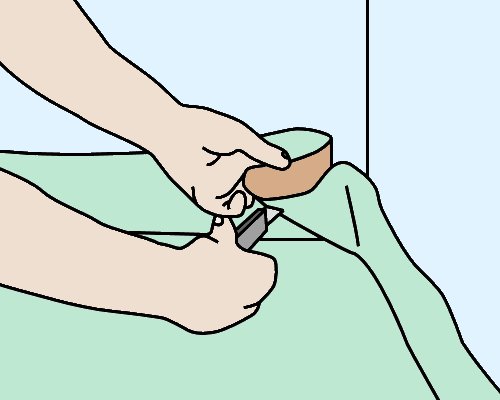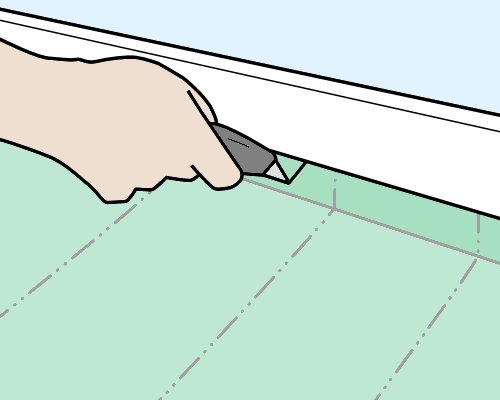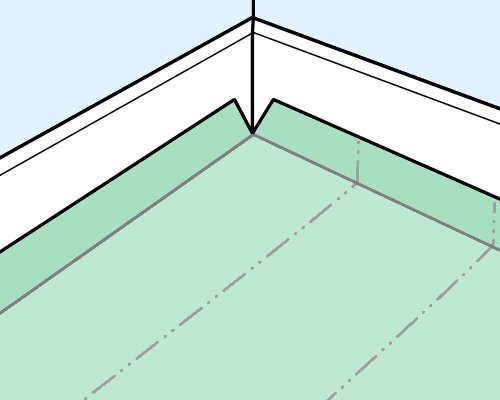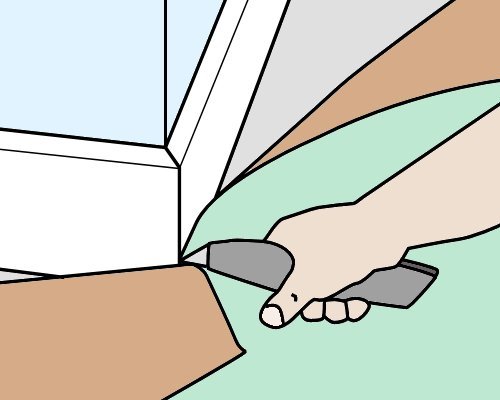Freehand cutting
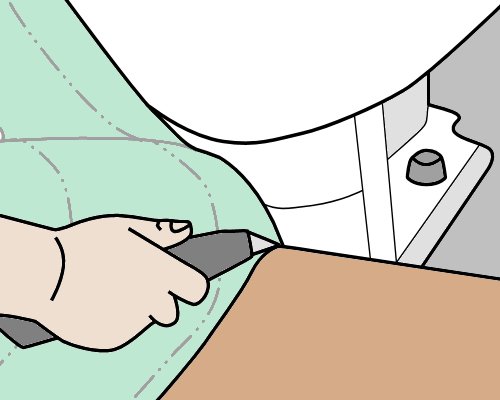 Audio for slide 8 (mp3 |6|KB)
Audio for slide 8 (mp3 |6|KB)
Three sides of an object
Flash the material up around the front of the object and push it in around the junction of the floor and object.
Slit the material almost to the floor.
Use a small crosscut at the bottom of the slit to stop the cut from tearing into the material.
Work the material down to the floor, cutting it flat to the floor wherever there are buckles or pressure points.

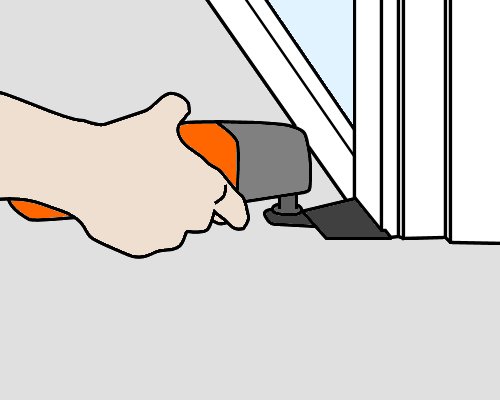 Audio for slide 9 (mp3 |6|KB)
Audio for slide 9 (mp3 |6|KB)
Other tricks
Door jambs and architraves
Where possible, undercut the door jambs and architraves to the thickness of the flooring material so it will fit underneath.
Use a jamb saw or multi tool to cut the timber.
If the jambs and architraves can't be undercut, fit the material by putting in relief cuts as you push it down.

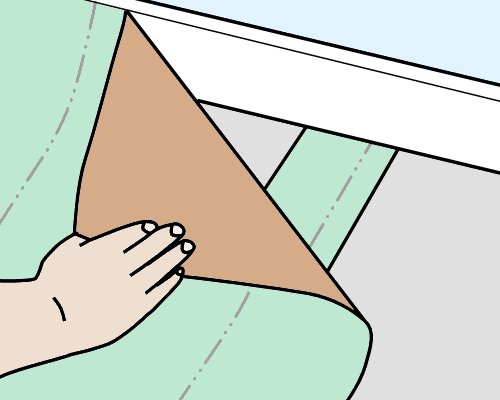 Audio for slide 10 (mp3 |6|KB)
Audio for slide 10 (mp3 |6|KB)
Strip measuring
This method of measuring is useful when the wall is straight but hard to reach with the knife.
Flash the material up the wall and then pull it back.
Put a piece of scrap material with a squared end under the material and push it hard against the wall.
Pull both pieces back together and mark the underside of the material at the end of the scrap piece. Do this several times along the wall.

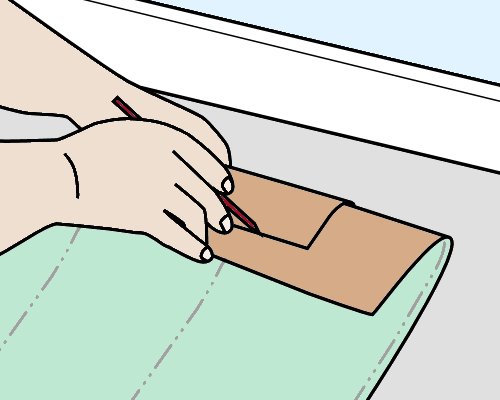 Audio for slide 11 (mp3 |6|KB)
Audio for slide 11 (mp3 |6|KB)
Don't forget to make an allowance for the curve of the material - the scrap piece will have slid back slightly due to the curvature.
Cut the material from the underside, being careful not to cut right through to the material underneath.


Learning activity
Audio 12 (mp3 |6|KB)There are various tools that can be used to undercut a door jamb and architrave. You can use a jamb saw or multi tool, or in some cases even a handsaw and chisel.
The link below will take you to a YouTube video clip called: 'Jamb saw and Dremmel multimax'.
Have you used power tools like these to undercut an architrave?
If so, what type of tool did you use and what was its brand name?

 Go to Direct scribing
Go to Direct scribing